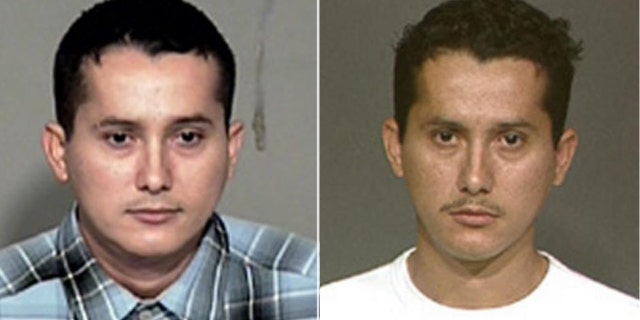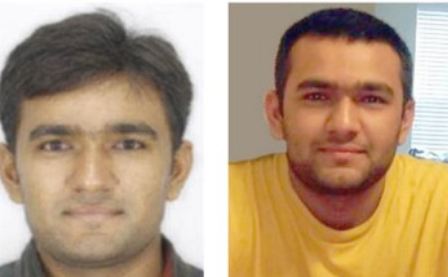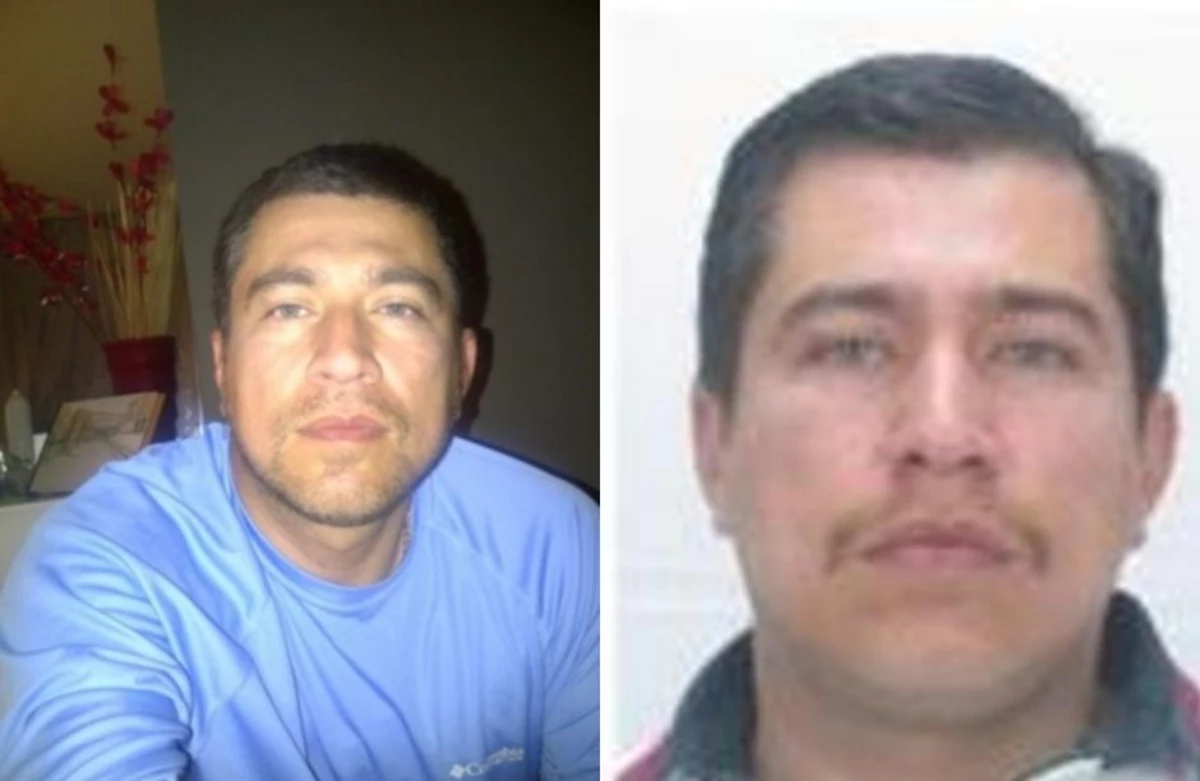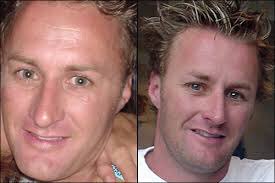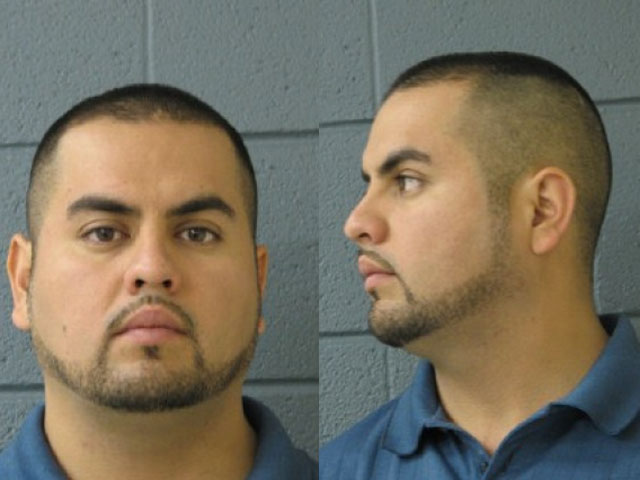The FBI Ten Most Wanted list has contained some of the most dangerous criminals since its creation in 1950.
When it was first made, the idea was for the list to assist the FBI in finding and capturing dangerous fugitives by giving the cases extra exposure. Information regarding the list can be found online and in places such as post offices, helping boost the list alongside the huge money incentives that tend to come along with an arrest and conviction of these fugitives.
The most notable person on the list was likely Osama Bin Laden, up until his death in 2011.
No one on the list is considered the “most dangerous”, there’s no #1 criminal, and fugitives generally don’t get removed from the list unless they are caught, have died, or charges against them are dropped. After this, they are replaced by another individual that the FBI believe fit the criteria.
So, in no particular order, let’s take a look at the FBI’s current Ten Most Wanted.
Contents [Click To Skip To]:
- Alexis Flores
- Bhadreshkumar Chetanbhai Patel
- El Gato
- Eugene Palmer
- Jason Derek Brown
- Rafael Cero-Quintero
- Robert William Fisher
- Alejandro Rosales Castillo
- Arnoldo Jimenez
- Yaser Abdul Said
1. Alexis Flores
Flores was added to the FBI’s Most Wanted in 2007.
His crimes – noted on the FBI’s website as kidnapping, murder and unlawful flight to avoid prosecution – date back to one specific and brutal one, back in August 2000.
Five-year-old Iriana DeJesus went missing while riding her bike. Her mother had turned her back for just a few minutes, and by the time she returned, Iriana was gone.
Five days later, the little girl was found sexually assaulted, strangled and wrapped in a trash bag in the basement of a nearby empty apartment building.
The building belonged to a man called Jorge Contreras, but he claimed to be out of town that day. He did, though, give the building keys to a young man called “Carlos”.
Carlos was hired by Contreras just days before Iriana went missing. A local homeless man, Carlos has no job, shelter, or money. Trying to do a good thing, Contreras decided to offer him a job as a handyman in the apartment building, letting him live there and even lend his clothes.
One item of clothing that Carlos had borrowed was a t-shirt with a distinctive logo on it. This was later found next to Iriana’s body, with her blood on it.
So, this Carlos seemed like a likely suspect, but they didn’t even get the chance to speak to him. After Iriana went missing, local residents never saw him again.
Police did what they could, creating composite sketches and running DNA samples, but the case grew cold in the years after.
What they didn’t know was that two years after this crime, a man was arrested over 2000 miles away in Arizona for shoplifting. Then, that same man was arrested in 2004 for possession of a forgery device after giving fraudulent identity documents to police because he was an illegal immigrant. After serving 60 days, he was deported in 2005.
This man was “Carlos”.
This man was also Alexis Flores.
Police discovered this after his DNA – collected from him in 2004 following his arrest – was entered into the DNA database in 2006. In 2007, it popped up as a match for the DNA found at the crime scene of Iriana’s murder.
He’s believed to be in his home country of Honduras, or to have returned back to America. There is a reward of up to $100,000 for information leading directly to Flores’ capture offered by the FBI.
He is considered “armed and extremely dangerous.
Sources:
FBI Most Wanted – Alexis Flores
AMW
2. Bhadreshkumar Chetanbhai Patel
Patel is an Indian born man wanted for killing his wife, Palak Patel, in Maryland, US, on a holiday to visit relatives in America.
These relatives owned a Dunkin Donuts shop in Maryland, and they allowed newlyweds Patel and Palak to work there while they visited.
They had worked there for two weeks before Palak’s body was found at a brutal scene in the kitchen one night in April 2015. Customers in the shop had become concerned when there seemed to be no staff coming to take their order.
They alerted a nearby police officer, and he went to the back of the shop. That was where he found Palak’s body. At just 21 years old, she had been beaten to death and stabbed with a knife from the kitchen.
It was over an hour before police identified Patel as someone of interest that they wanted to speak to.
Unbeknownst to them, he had left the shop immediately after the murder, where he walked to his nearby apartment to pick up some things then got a cab to a hotel in New Jersey. He checked in that night, then checked out at around 10am the next morning.
CCTV footage of inside the shop that night later showed what had happened.
Palak and Patel were both in the kitchen at around 9:30pm. The surveillance footage shows them disappear out of view of the camera behind some racks. Moments later, Patel reemerges without his wife then leaves the shop.
Police discovered that Palak had last spoken to her family back in India on the phone before her death, and she was telling them about how she wanted to return home to India but Patel didn’t.
It is believed Patel overheard this conversation and an argument ensued and, afterwards, Patel made the decision to kill his wife so he could continue living in America.
He was last seen the morning of April 13 2015 at Newark Penn Station, and is believed to have either fled the country or hiding with relatives.
Police do know that he couldn’t legally leave the country because his visa had ran out by the time of the murder.
$100,000 is available for information that leads to his whereabouts, and he should be considered “armed and extremely dangerous.”
Sources:
FBI Most Wanted – Bhadreshkumar Chetanbhai Patel
Reddit
3. Jose Rodolfo Villarreal-Hernandez (aka “El Gato”)
A Mexican drug cartel boss, Villarreal-Hernandez is listed on the FBI website as being wanted for one crime in particular; “his alleged involvement in the interstate stalking and conspiracy to commit murder-for-hire of a 43-year-old male” in 2013.
He’s believed to be responsible for many other murders in Mexico.
According to the US Department of State website, he’s a high-ranking member of the Beltran-Leyva Organization (BLO) Drug Cartel where he oversees cocaine and marijuana imports into the US, as well as committing violent crimes to uphold his and the organisation’s ruthless reputation.
The man who was killed – Juan Jesús Guerrero Chapa – was believed by Villarreal-Hernandez to have been responsible for the murder of Villarreal-Hernandez’s father a few years earlier.
His father was killed by rival cartel, the Gulf Cartel, and Villarreal-Hernandez blamed Guerrero, who was a lawyer supposedly associated with the Gulf Cartel, and also represented the leader Osiel Cárdenas Guillén.
Three men involved have since been arrested and taken to trial, but the two who actually did the killing and Villarreal-Hernandez, have never been caught.
The FBI believe him to be in Mexico and have offered a reward of up to $1 million for information leading to his arrest. He is “armed and extremely dangerous.”
Sources:
FBI Most Wanted – El Gato
State
4. Eugene Palmer
81-year-old Eugene Palmer was added to the FBI’s Most Wanted list in 2019.
Seven years earlier, he allegedly killed his daughter-in-law, then went on the run.
Tammy Palmer was shot to death in her backyard. Police believe the motive was a long-time feud that the two had regarding a property on Palmer’s land that Tammy lived in.
Tammy had filed a restraining order against her husband and Palmer’s son, John, while their marriage seemed to be falling apart. According to family members, she threatened to divorce John and sue him for the land that the property was on. Afterwards, she got into an argument with Palmer because the land was actually his, not John’s.
Investigators believe he hid in the woods and shot her from a distance.
He was last seen in New York’s Harriman State Park, where he had abandoned his car. After that, he’s thought to have fled on foot.
Despite some people believing he has died while hiding out in the woods of the park, police believe he is still alive.
He should be considered armed and dangerous, and police have offered a reward of up to $100,000 for information leading to the arrest and conviction.
Sources:
FBI Most Wanted – Eugene Palmer
Bustle
5. Jason Derek Brown
Jason Derek Brown, a man described as someone who “enjoys being the center of attention”, seemed to have the best life.
He had a lavish lifestyle; expensive cars, beautiful women, luxurious holidays abroad.
He also had a secret, though. It was all fake. Brown was in debt, and lots of it. In fact, despite his two businesses, he had never been rich, not really – it was all done through years of bank and check fraud. Sometimes, he would even go to car dealerships and use fake social security numbers and addresses to buy cars. Police also believe he was responsible for some petty thefts and home invasions.
He was getting away with this, too. But by November 2004, it appears that he’d had enough of these scams.
That month, he purchased a gun and took a firearms instruction course.
Days later, Robert Keith Palomares, a 24-year-old armored car guard, would be shot to death while carrying out the weekend deposits outside an AMC theater in Phoenix, Arizona.
The gunman shot at him six times, five bullets hit him in the head and the other one missed. He had no time to defend himself.
The assailant got away on a bicycle with the $56,000 that Robert was carrying. The bicycle was later found and fingerprints were lifted from it and tested.
They belonged to Jason Derek Brown.
Because of this, he was quickly identified as a suspect and he went on the run. He fled from Arizona, to Henderson, Nevada. Then, he swapped his car for a black Cadillac that he had in storage. The Cadillac was found at the beginning of 2005 at Portland Airport.
Months later, his older brother David John Brown II was indicted for obstruction of justice, after being accused of tampering with evidence when he cleaned Jason’s car – the one that he had swapped for the Cadillac. He pled guilty in 2007.
That same year, Jason Derek Brown was put on the FBi’s Ten Most Wanted list, and his arrest has a reward of up to $200,000. He is considered armed and extremely dangerous, and may be carrying a Glock 9mm and a .45 caliber handgun.
He has links to California, Arizona, and Utah.
The most recent and most credible sighting of him was in Salt Lake City, in 2008, when a former acquaintance who had gone to missionary training with him, recognised him at a traffic light. Brown sped away through the red light. According to the man, he was now more tanned and had longer hair.
Between 1998 and 1980, Brown served as a mission for the Mormon church in Paris. Because of this, police also believe he may be hiding amongst the Mormon community, potentially living with someone who does not know his identity.
Sources:
FBI Most Wanted – Jason Brown
Wiki
6. Rafael Caro-Quintero
Rafael Caro-Quintero has one of the longest list of crimes in FBI Ten Most Wanted history.
These are: Violent Crimes in Aid of Racketeering, Conspiracy to Commit Violent Crimes in Aid of Racketeering, Conspiracy to Kidnap a Federal Agent, Kidnapping of a Federal Agent, Felony Murder of a Federal Agent, Aiding and Abetting, Accessory After the Fact.
Caro-Quintero is known to have founded two cartels and was involved in drug trafficking from Mexico to the US. In 1985, he kidnapped, tortured and murdered three men, one of them being an American intelligence officer. Three leaders of the Guadalajara Cartel – one of them being Caro-Quintero – were convicted for the crimes, and Caro-Quintero was sentenced to 40 years in prison. That is the maximum time someone was allowed to be sentenced to in Mexico at that time.
The Guadalajara cartel dissipated after this.
In 2013, though, Caro-Quintero was released after it was ruled that he had been tried improperly. He served 28 years of his 40 year sentence.
However, just days later, a Mexican federal court issued an arrest warrant against him after pressure from the US federal government. Because of this, he is still wanted for the crimes he was initially convicted of.
There has been some conflict between the US and Mexico over the logistics of whether he would be allowed to be extradited to the US, though.
When, or if, Caro-Quintero is arrested by the Mexican government, the US government will have 60 days to present a formal extradition request. However, Mexican representatives argued that Caro-Quintero can’t be extradited to the US, because Mexican law doesn’t allow criminals to be tried for the same crime in different countries. U.S. lawyers, on the other hand, may argue that his first trial was illegitimate which would mean that the law that prevents that would not be applicable. In order for Caro-Quintero’s extradition to be accepted, the US has to present other criminal charges and agree that he wouldn’t face the death penalty if he’s convicted, as there are no laws for capital punishment in Mexico.
The Office of Foreign Asset Control believes that, since his release, he has continued his drug trafficking. In subsequent interviews with various news publications, he has denied this.
The US Department of State’s Narcotics Rewards Program has offered a reward of up to $20 million for information that leads to his arrest and/or conviction.
Sources:
FBI Most Wanted: Rafael Caro-Quintero
Huffington Post
Borderland Beat
7. Robert William Fisher
On April 10th 2001, police in Scottsdale, Arizona, were called out to an explosion.
The house of the Fisher family was on fire which ended up as an explosion that was felt by everyone within a half a mile radius.
Police managed to enter the property soon after, wherein they found the bodies of Mary Fisher and her two children, 12-year-old Brittany, and 10-year-old Robert Jr/”Bobby”. Robert, the father, was nowhere to be seen.
The bodies were obviously burned, but they were found in their beds seeming to have not made any attempts to escape. Closer inspection showed police that this was no accident – all three were dead before the fire. The children had their throats slit, and Mary had been shot in the back of the head.
On April 14th 2001, Robert William Fisher was named as an official suspect. Less than a week later, his car and his dog were found in Tonto National Forest, which was a hundred miles north of Scottsdale.
He was officially considered a fugitive in July of the same year after an Arizona Superior Court state arrest warrant was issued. He was charged with three counts of first-degree murder and one count of arson.
Over a year later, he was officially listed on the FBI Ten Most Wanted.
During their investigation, police discovered the believed motive: Mary was going to leave Robert.
Fisher was apparently controlling towards Mary from the beginning, with some describing him as a control freak and cruel. His behaviour only got worse after they had children. They had frequent arguments and, according to one of his co-workers, Robert had cheated on Mary Anne, too.
In the weeks prior to the deaths, Mary told several friends that she was planning to divorce Robert. It’s believed that Robert likely knew of her plans or found out that night, and took the news particularly badly due to his own parents divorcing when he was young. Friends, family, and co-workers said his parents’ divorce affected him throughout his life, and he was determined not to have his marriage end.
Robert is currently wanted for three counts of First Degree Murder and Arson of an Occupied Structure. He is considered armed and extremely dangerous, and is assumed to have various weapons including a rifle. There is a reward of up to $100,000 for information leading to his arrest.
Sources:
FBI Most Wanted – Robert Fisher
Medium
Murderpedia
8. Alejandro Rosales Castillo
The body of 23-year-old Truc Quan “Sandy” Ly Le was found in Charlotte, USA, on August 17th 2016. She had been shot in the head once.
A week before that, she was reported missing, and her car was found on the 13th August. That same day, another call was made to the police reporting two other disappearances.
The families of 18-year-old Alejandro Rosales Castillo and his 19 year old girlfriend Ahmia Feaster contacted police after they both received calls from the teenagers saying that they were safe but didn’t know where they were. This led their families to believe that they had been kidnapped and were forced to make these calls. Police soon began investigating all three disappearances as a linked incident, though, as all three were co-workers, and Castillo had reportedly dated Le before, too.
After she went missing, Le’s uncle told police that he had last seen her after she went out to meet someone who owed her $1000. However, bank statements showed that $1000 had actually been taken out of her account, and not put into it.
It soon transpired that she had actually been texting Alejandro Rosales Castillo, and it was him that she had arranged to meet.
Then, it was discovered that the day before Le’s body was found, Castillo was captured on CCTV leaving the country along with someone.
Then, two months later on October 20th 2016, Ahmia Feaster contacted authorities in Aguascalientes, Mexico to hand herself in. She had been the person fleeing the country with Castillo. After handing herself in, she was extradited to the U.S and charged as an accessory after the fact of felony murder and larceny of a motor vehicle. She posted bond and was released in January 2017.
Feaster told authorities that she and Castillo had been staying in Aguascalientes with Castillo’s cousins. During the two months they were staying down there, Castillo had gone missing once again, and Feaster decided to hand herself in.
On November 2nd, 2016, Castillo was charged with first degree murder and then, after being classified as a charged with unlawful flight to avoid prosecution on February 10th 2017.
Police say that they believe the motive was simply robbery. Castillo had no intention of paying Le back, and instead lured her to meet him, forced her to withdraw all of the money she had in her account, then drove her in her car to the woods where he shot her and dumped her in a ravine. He then escaped the scene by being picked up by Feaster, where they then left the country.
He should be considered armed and dangerous with violent tendencies, and an escape risk. There is a reward of up to $100,000 for information leading to the arrest of Alejandro Rosales Castillo.
Sources:
FBI Most Wanted – Alejandro Castillo
News Observer
Express Digest
9. Arnoldo Jimenez
Arnoldo Jimenez married Estrella Carrera on May 11th 2012.
The next day, she was dead.
Estrella was found in the bathtub of her apartment, stabbed to death and still dressed in the silver cocktail dress that she was wearing during her wedding reception.
Her family had received a phone call from Jiminez’s sister. He had called her and told her that him and Estrella had a “bad fight” and he had left her bleeding.
Family members became worried after not hearing from her when she was supposed to pick up her two children from them on Saturday. They called the police who visited her apartment and found her.
There were no signs of forced entry at her home, and police quickly realised that Jiminez was nowhere to be found.
They concluded that he had stabbed her several times in the back of his car, probably after they had an argument, then dragged her to her apartment and placed her in the bathtub before fleeing.
Investigators tracked his mobile, discovering that, on May 12th, it had been used in Chicago then Illinois. Later, it was used in Memphis, Tennessee, then in Arkansas. The next day, he’d made calls from Houston and then in Mexico.
In September of that year, Jiminez’s brother was arrested on unrelated charges. Jiminez’s car was found on his brother’s property, and police found blood on the back seats, allowing them to come to the conclusion of where Estrella was killed.
Police believe Jiminez’s brother drove him to Mexico, then returned to his house with the car.
A state warrant was issued for his arrest on May 15th 2012 after he was charged for first degree murder. Then, a federal arrest warrant was issued after Jimenez was charged federally with unlawful flight to avoid prosecution.
He is to be considered armed and dangerous, and there’s a reward of up to $100,000 for information leading to his arrest.
They believe he’s hiding in Mexico, perhaps specifically Durango or Reynosa, Tamaulipas.
Sources:
FBI Most Wanted – Arnoldo Jiminez
ABC
10. Yaser Abdul Said – CAPTURED
Yaser Abdul Said is the only person on the list to have been captured.
He was arrested on August 26th 2020, and has yet to have been taken off the list. He was indicted on capital murder charges, and is awaiting trial.
His crimes were the two murders of his daughters, 17-year-old Sarah and 18-year-old Amina.
He was reportedly very controlling of his family, and both girls told family and authorities that he had physically and sexually abused them. He thought his daughters were dishonouring their Egyptian culture by not adhering to its tradition. Especially when he discovered that Amina had an American boyfriend.
On January 1st 2008, Said lured his daughters into his taxi under the pretence of taking them out for food. There, he shot them both and fled. Sarah managed to call 911, telling them, “My dad shot me, I’m dying.” She passed away before the taxi was found.
Just the next day a capital murder warrant was issued for his arrest.
At the time, investigators believed he may have fled to Egypt – though this was later proven wrong – and a federal warrant for unlawful flight to avoid prosecution was issued by a district court on 21st August 2008. He was placed on the Ten Most Wanted List in 2014.
In 2017 he was discovered to have been living in an apartment under his son’s name, but he escaped after authorities were tipped off. Then in 2020, police began surveilling a home that belonged to Said’s niece.
Said’s brother – the father of the aforementioned niece – and Said’s son were seen by police entering and leaving the house on a number of occasions, and eventually they obtained a search warrant and discovered Said inside the house. The three men were arrested.
UPDATE:
Said’s brother – Yassein Said – was sentenced on June 4th 2021 to 12 years in prison. Months before he was found guilty of conspiracy to conceal a person from arrest, concealing a person from arrest and conspiracy to obstruct an official proceeding.
Said’s son – Islam Said – was sentenced to 12 years in April 2021 after pleading guilty to the same charges as his uncle.
Sources:
FBI Most Wanted – Yaser Abdul Said
BBC
AP News

































